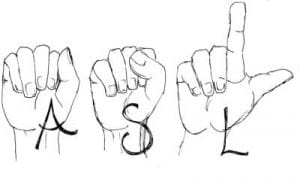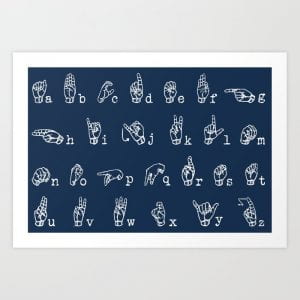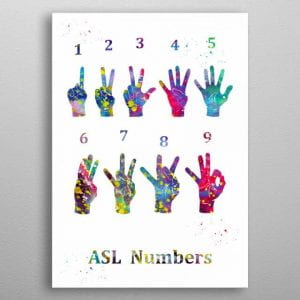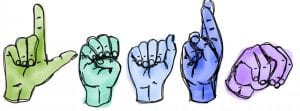I am very lucky that my project is one where meeting my mentor, Sandra, online is possible, since I am still able to learn ASL through a screen, although it is not ideal. I have spent this time in the past month learning how to sign leisure activities, such as dancing, watching movies, shopping, and hiking, how to identify people based on their appearance and body posture, as well as learning signs for certain languages and places, like school and university. I also started learning how to sign emotions, how much people remember, and degree of difficulty of activities. To practice all these signs, Sandra gave me a worksheet to fill out with my ‘autobiography’, where I can practice signing everything on the sheet. My ‘autobiography’ includes my name, what languages I know, where I go to school, how difficult I think learning certain activities is, and my likes and dislikes.
Here is a video of a few signs for leisure activities I have learned
What has been my most difficult mentoring challenge so far? Why?
The most difficult mentoring challenge so far has been trying to continue meeting while unable to meet in person because of the coronavirus. This has been difficult since I want to continue meeting Sandra to keep learning, but we are unable to meet in person. We have decided to start meeting using Zoom online. This is not as convenient as meeting in person, and many challenges will arise due to this obstacle. Since Sandra is very organized and brings ‘worksheets’ to each meeting to refer to, seeing and receiving those worksheets will be one of those challenges. I have also gotten to know Sandra more than I did at the beginning of the project, and another challenge will be maintaining that connection when we are not meeting in person. I will make sure to do extra research between our online meeting so that I can keep learning at a regular pace throughout the project.
What is working well? Why?
One element of this project that I feel is working well is the communication with Sandra during our meetings. Even though we are not talking, we are able to understand each other using ASL, or, when I am not able to fully express myself with the ASL I have learned, I fingerspell words or we write things down. ASL largely involves facial expressions, so even if I do not understand what Sandra is signing, I am able to get the idea through her body language.
I am also really getting to know Sandra, which makes the meeting even more enjoyable. When Sandra was teaching me how to sign leisure activities, such as camping, sewing and cooking, we would ask each other what we liked doing in our spare time. In this activity, I learned a lot about what Sandra enjoys doing, as well as what we have in common.
What could be working better? How can I make sure this happens?
Something that could be working better are more regular meetings with Sandra. We have been trying to meet every week, but since it was Spring Break and everyone is very busy because of the virus, we have not been able to meet on a regular basis. To make sure this happens, I will communicate with Sandra and try to find a day and time where we can meet regularly using Zoom online, even if it is only every two weeks instead of each week, as we were doing before Spring Break.






